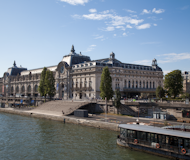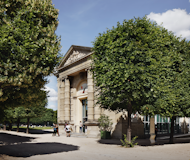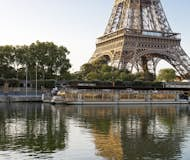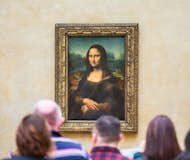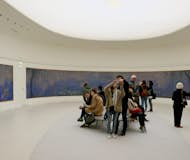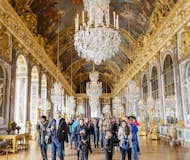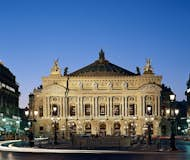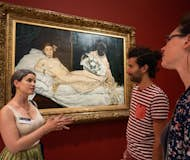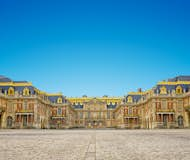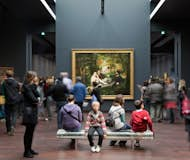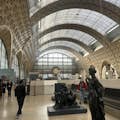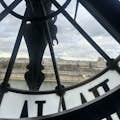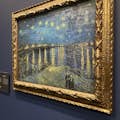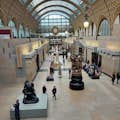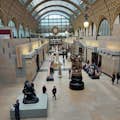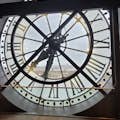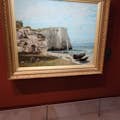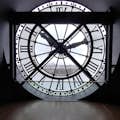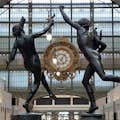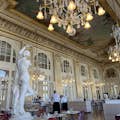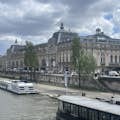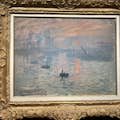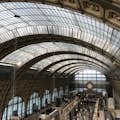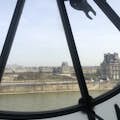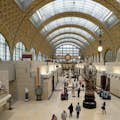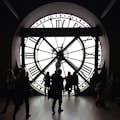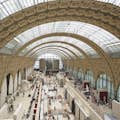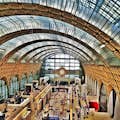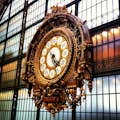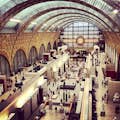
Check availability
9 options • from $17.50


Musée d'Orsay: Small Group Tour of Must-Sees
- Duration: 1h 30mins
- Live guide in English
- Group of max. 6 people
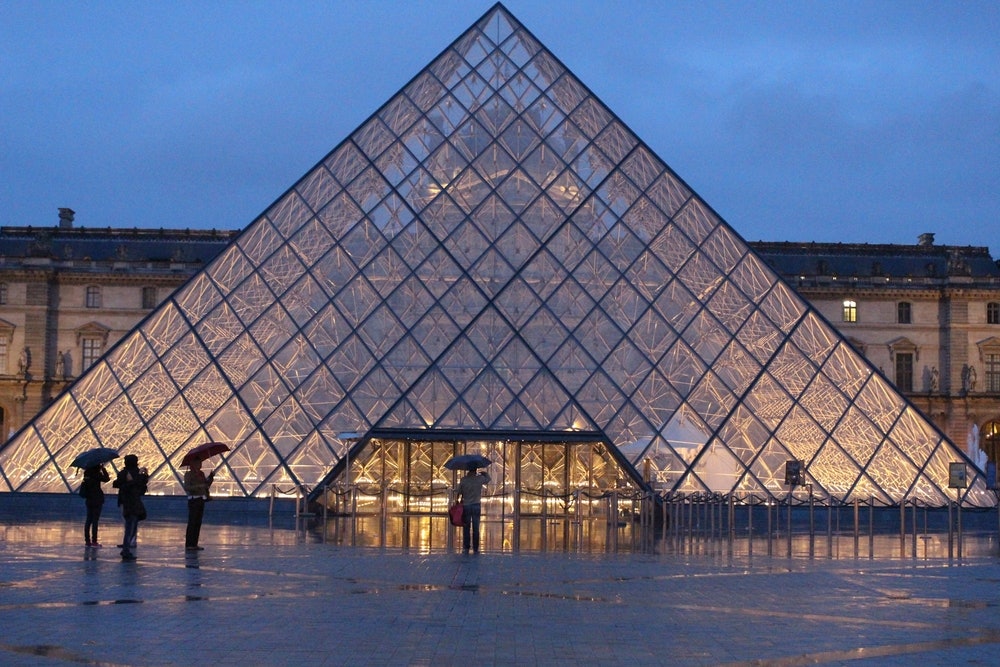
Paris Top 3 Museums
- Musée d'Orsay or Musée de l'Orangerie
- Louvre Museum
- Centre Pompidou or Fondation Louis Vuitton

Musée d'Orsay: Paris 1874 Inventing Impressionism

Musée d'Orsay: Tonight with the Impressionists Paris 1874 Immersive Experience
- Duration: 1h

Musée d'Orsay: Small Group Tour
- Duration: 2h 30mins
- Live guide in English
- Group of max. 6 people

Musée d'Orsay: Guided Tour
- Duration: 2h
- Live guide in English
- Group of max. 20 people
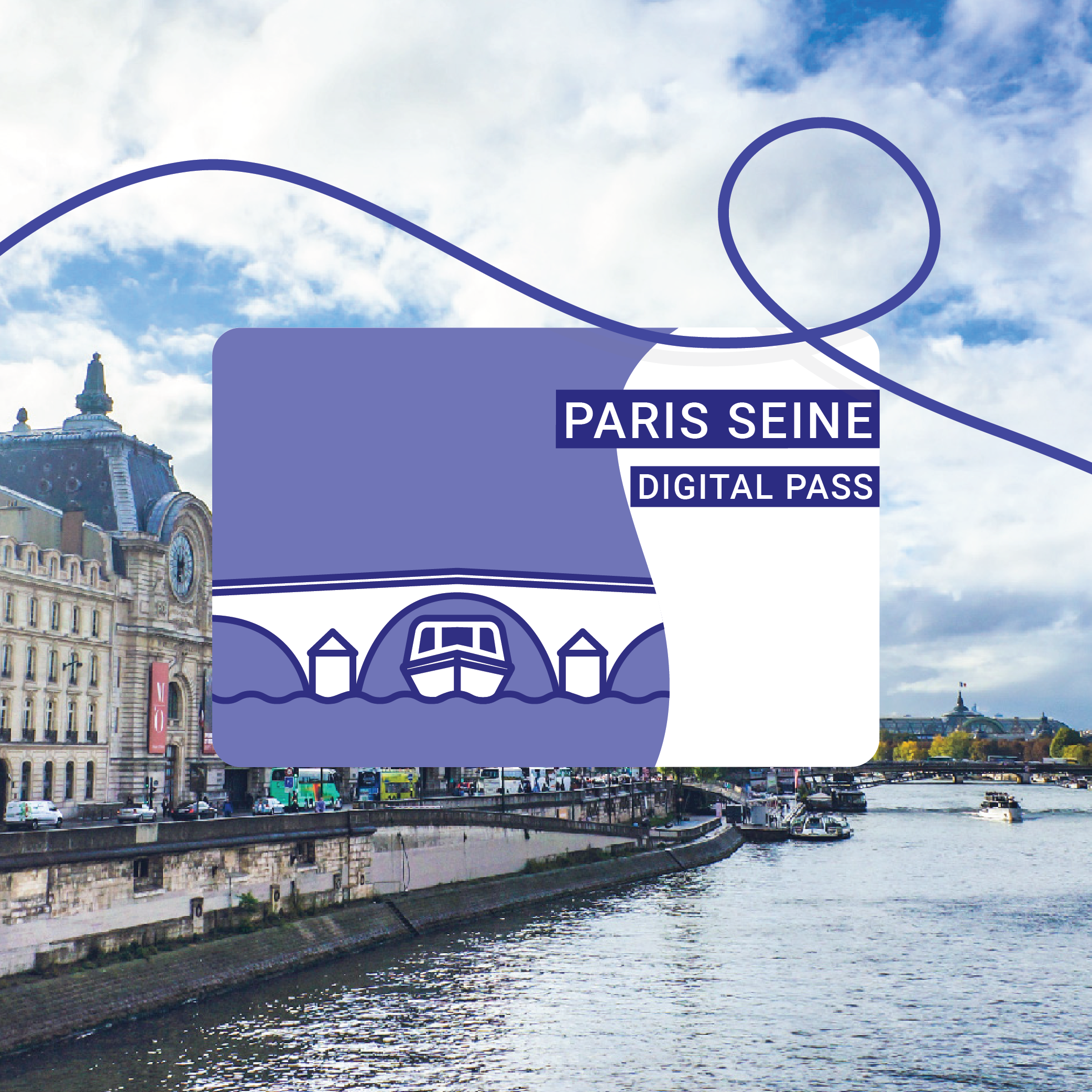
Paris-Seine Pass
- Musée d'Orsay
- Aperitif Cruise on the Seine
- Sainte Chapelle & Conciergerie

Musée d'Orsay: Private Guided Tour
- Live guide in English, German, French, Italian, Russian, Spanish
- Group of max. 6 people
Hand-picked combinations
Combine Musée d'Orsay with other Paris favorites. Some things are better together.
Current exhibitions
Musée d’Orsay FAQs
Your Musée d’Orsay tickets get you all the time you need at this popular Parisian attraction, but most people spend between 3 to 4 hours inside this massive former train station.
The Musée d'Orsay's impressive permanent collection covers four entire floors and several important periods in history, so it's a good idea to think about which key artists you're most interested in and focusing your visit.
The best time to visit the Musée d’Orsay is on a Wednesday or Friday morning or afternoon. These days tend to be quieter, so your Musée d’Orsay tickets will take you further, on a far more peaceful journey.
If it's hard to visit during these times, take advantage of Thursday's extended evening hours. There tend to be fewer children and families on Thursdays after 18:00.
During Paris's low season (November to March) is also a good time to visit. No matter the season, weekends will always be busy!
There are two different cafes inside the Musée d’Orsay:
- Café de l'Ours is the perfect place for a quick drink or snack, on a self-service basis
- Café Campana is a brasserie-style café that serves up bigger meals
During museum opening times, you are free to photograph or film in the permanent exhibition halls.
Keep in mind these photos or videos should be kept for personal or private use, and not for groups or commercial purposes.
Tickets Overview
-
See the largest collection of Impressionist and post-Impressionist art, including paintings, sculptures, and Art Nouveau furniture
-
The museum is home to famous works such as Van Gogh's Starry Night Over the Rhone and Matisse's Luxe, Calme et Volupté
-
You'll find paintings and sculptures from greats such as Renoir, Degas, Cézanne, and Gaugin, as well as iconic pieces from Monet, Manet and Seurat
-
Located in the former Gare d'Orsay train station, it's a beautiful venue that spans five floors
-
Musée d'Orsay is located right on the shores of the Seine, making it easy to visit the Louvre and Musée de l'Orangerie on the same day
Join the 3 million visitors at the Musée d'Orsay each year by booking your tickets in advance. Spend more time admiring the collection – and less time at the ticket counter – when you book online.
Choose the best Musée d'Orsay tickets for you:
-
Basic admission tickets to Musée d'Orsay get you access both the permanent collection and temporary exhibitions
-
Enrich your experience with a guided tour who will show you the highlights and history of this iconic art museum
General information:
-
The Musée d'Orsay is closed on Mondays. It’s also closed on May 1 and December 25
-
Arrive on time – your ticket won't be valid if you arrive after your time slot
-
The museum has two entrances (Entrance A: River Seine and Entrance C: Rue de Lille). Check your ticket to see which door you should use
-
Cloakrooms are free of charge. Bags or luggage must be smaller than 56 x 45 x 25 cm (1.8 x 1.4 x 0.8 ft) in size. Baby strollers can also be stored here
-
You may be eligible for free Musée d’Orsay admission. Remember to bring applicable documentation with you
Accessibility:
-
All areas of the museum are suitable for disabled people, including temporary exhibitions, dining areas, information points, and gift shop
-
The museum has wheelchairs, folding seats, canes, and strollers available to borrow
-
If you're a disabled person arriving by car, you may use the disabled parking spaces near the Musée d'Orsay that are reserved for guests with limited mobility
-
You can find a baby changing area on floor -1, near the adult group reception area
Musée d'Orsay reviews
Customer images



About: Musée d'Orsay
Housed in the stunning Beaux-Arts style Gare d'Orsay railway station, The Musée d'Orsay is home to significant and stunning works by painters including Gauguin, Monet, Manet, Degas, Renoir, Cézanne, and Van Gogh.
It's widely considered to be one of the most culturally important museums in the world and hosts the most significant impressionist and post-impressionist works ever created.
| Friday | 09:30 - 18:00 |
| Saturday | 09:30 - 18:00 |
| Sunday | 09:30 - 18:00 |
| Monday | Closed |
| Tuesday | 09:30 - 18:00 |
| Wednesday | 09:30 - 18:00 |
| Thursday | 09:30 - 21:45 |
Related travel guides

Musée d’Orsay Paintings: Show Me the Monet
A full guide to the Musée d’Orsay's highlights and hidden gems, as well as practical information on how to make the most of your trip to this Parisian icon.
